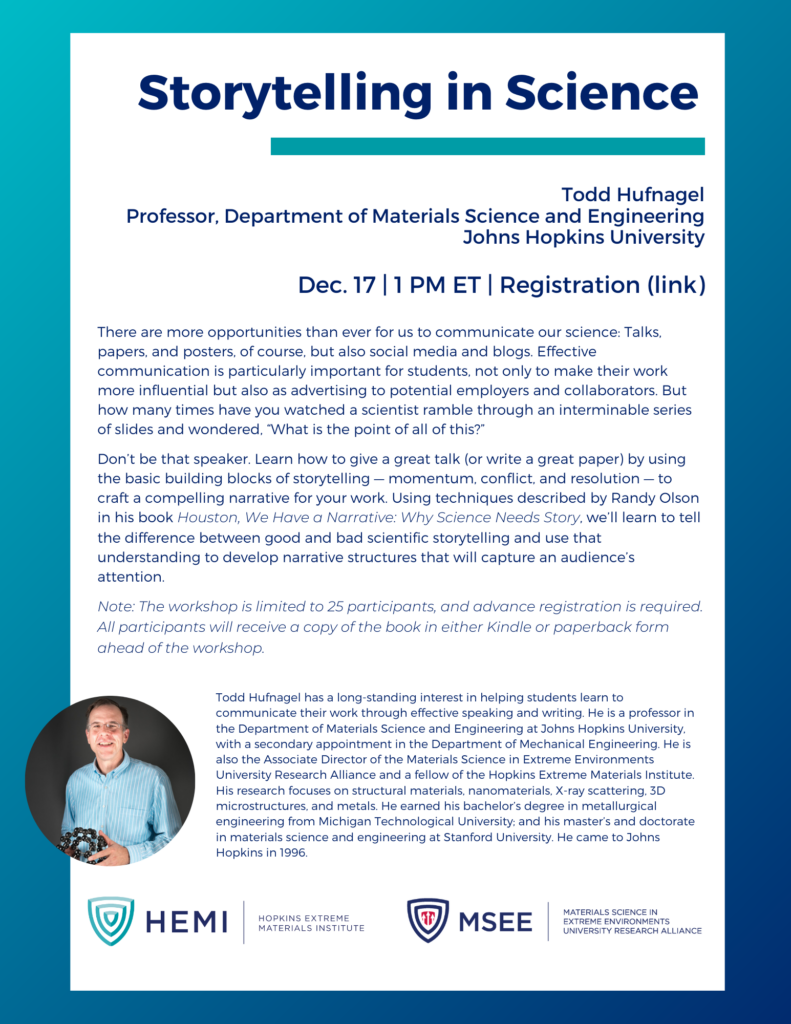There are more opportunities than ever for us to communicate our science: Talks, papers, and posters, of course, but also social media and blogs. Effective communication is particularly important for students, not only to make their work more influential but also as advertising to potential employers and collaborators. But how many times have you watched a scientist ramble through an interminable series of slides and wondered, “What is the point of all of this?”
Don’t be that speaker. Learn how to give a great talk (or write a great paper) by using the basic building blocks of storytelling — momentum, conflict, and resolution — to craft a compelling narrative for your work. Using techniques described by Randy Olson in his book Houston, We Have a Narrative: Why Science Needs Story, we’ll learn to tell the difference between good and bad scientific storytelling and use that understanding to develop narrative structures that will capture an audience’s attention.
Todd Hufnagel has a long-standing interest in helping students learn to communicate their work through effective speaking and writing. He is Professor of Materials Science and Engineering and Mechanical Engineering, Associate Director of the Materials Science in Extreme Environments University Research Alliance and HEMI Fellow.

